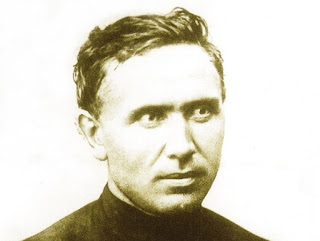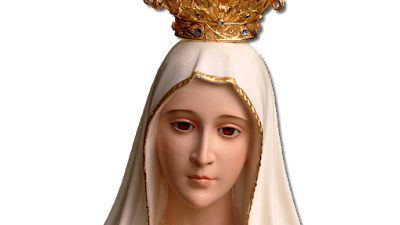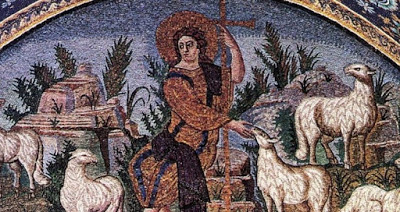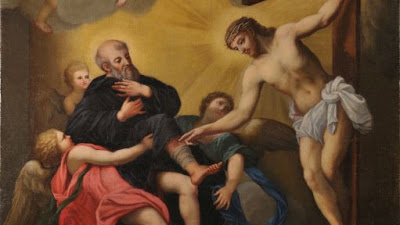Fr. Roger J. Landry
As authentic Marian apparitions go, many of the aspects of our Lady’s appearances to the three shepherd children in Fatima a century ago seem commonplace: Mary asks the seers to pray and do penance for the conversion of sinners, calls them to daily devotion to the Rosary, advocates for peace in the world, requests the children to return on specific dates, and entrusts them with secrets.
What has never ceased to surprise me, on the other hand, is what she revealed to the children after she had showed them a very vivid vision of hell.
The sight of “demons and souls in human form” with “shrieks and groans of pain and despair” was so terrifying that, Lucy wrote later, had Our Lady not earlier promised them that she would one day take them to heaven, they “would have died of fear and terror” on the spot.
After the vision, Mary said to them, “You have seen hell where the souls of poor sinners go,” a clear indication that Hell is a real possibility of human freedom and doesn’t seem to be empty. “To save them, God wishes…,” she continued, and told them about a specific practice.
I think it’s worthwhile to pause to consider what we think would have been fitting for her to indicate: what practice would be a remedy for Hell and an antidote for the sinful choices that lead there?
Well-formed Christians might posit several reasonable guesses: Repent and believe in the Gospel. Prayer. Frequent Confession. Live faithfully the promises of one’s baptism. Keep the Commandments. Live a Eucharistic life. Love God and neighbor. Care for the hungry, thirsty, stranger, naked, ill and imprisoned. Our evangelical brothers and sisters might say: Confess with your lips and believe with your heart that Jesus is Lord and accept him as Lord and Savior.
Prior to the Fatima apparitions, I don’t think any of us, even if we were given 100 guesses, would ever have come up with the answer Mary actually gave.
The means by which God wished to establish to save sinners from Hell, she said, was “devotion to my Immaculate Heart” throughout the world. “If what I say to you is done,” she emphasized, “many souls will be saved and there will be peace.”
Our Lady went on specifically to request that Russia — which in 1917 was experiencing the beginning of the Bolshevik revolution — be consecrated to her Immaculate Heart, lest Russian communism “spread its errors throughout the world, causing wars and persecutions of the Church.” Atheistic communism, for our Lady, was not a neutral political system, but a violent conceptual attack on God and on those made in his image that would bring incalculable harm.
But what does it mean devoutly to consecrate ourselves and the world to Mary’s Immaculate Heart?
It means first and fundamentally to entrust ourselves to Our Lady, to belong to her, to enter into a covenant with her.
At a deeper level, consecration to her “immaculate heart” means to beg her to help make our heart like hers, since Jesus declares that “the pure of heart shall see God” (Mt 5:8). The future Pope Benedict, commenting in 2000 on Mary’s message in Fatima, said that Mary’s is a “heart that, with God’s grace, has come to perfect interior unity and therefore ‘sees God.’ To be ‘devoted’ to the Immaculate Heart of Mary means therefore to embrace this attitude of heart, which makes the fiat—‘your will be done’—the defining center of one’s whole life.”
In the Preface for the Votive Mass of the Immaculate Heart of Mary in the Compendium of Masses of the Blessed Virgin Mary, there is a beautiful commentary on the characteristics of Mary’s heart that one seeks to embrace through consecration.
“You gave the Blessed Virgin Mary,” the priest prays, “a wise and obedient heart, that she might perfectly carry out your will; a new and gentle heart, in which you were well-pleased and on which you inscribed the law of the New Covenant. You gave her an undivided and pure heart, that she might be worthy to be the Virgin Mother of your Son and to rejoice to see you forever. You gave her a steadfast and watchful heart, so that she could endure without fear the sword of sorrow and await in faith the resurrection of her Son.”
A heart that’s undivided and pure like Mary’s, that’s wise and obedient, that’s faithful and watchful, is a heart that gives a wholehearted yes to God. It’s a heart that treasures God within. Such a heart “open to God, purified by contemplation of God,” Cardinal Ratzinger wrote in 2000, “is stronger than guns and weapons of every kind. The fiat of Mary, the word of her heart, has changed the history of the world, because it brought the Savior into the world.”
God wishes, Mary said, to establish throughout the world devotion to her heart, to have our hearts freely entrust themselves to her love and seek to emulate her wholehearted fiat.
But what does it mean to “Russia” or the “world,” to Mary’s Immaculate Heart, as Mary also asked? How can we consecrate others or foreign countries?
It means prayerfully and perseveringly — not just as individuals but the whole Church in unison — to entrust all peoples to Mary’s intercession and maternal care, seeking to transform the world one person at a time to become more Marian in relation to God.
This consecration happened according to the wishes of our Lady, the surviving seer Lucy confirmed in 1989, when St. John Paul II, in union with the bishops across the globe, consecrated the world to the Immaculate Heart on March 25, 1984.
In the beautiful, nearly 1000-word prayer, John Paul II begged Mary to “accept the plea that we make in the Holy Spirit directly to your heart and embrace … those whose act of entrustment you too await in a particular way,” a clear reference to Russia.
“Before your Immaculate Heart, we desire, together with the whole Church, to unite ourselves with the consecration that, for love of us, your Son made of himself to the Father (Jn 17:19). … The power of this consecration lasts for all time and embraces all individuals, peoples and nations. … Help us to live in the truth of the consecration of Christ for the entire human family of the modern world. … Help us to conquer the menace of evil, which so easily takes root in the hearts of the people of today.”
He then implored her to deliver us from famine, nuclear war, incalculable self-destruction, sins against the life from its very beginning, hatred, the demeaning of human dignity, every kind of injustice, readiness to trample on God’s commandments, attempts to stifle the truth, loss of awareness of good and evil, and sins against the Holy Spirit.
“Help us with the power of the Holy Spirit,” he continued, “to conquer all sin: individual sin and the ‘sin of the world,’ sin in all its manifestations,” so that “the infinite saving power of the Redemption, the power of merciful love, may … put a stop to evil [and] … transform consciences.” He finished by entreating, “May your Immaculate Heart reveal for all the light of hope.”
One of the best ways to mark Fatima’s centenary would be, individually and ecclesially, to renew our Marian consecration and grow in devotion to her Immaculate Heart. This is the way, Mary candidly indicated, God seeks to save us, others and the world from Hell. This is the way of life, she revealed, that will bring peace to the world.
Originally published in The Anchor, April 7, 2017. Republished w/ permission.










